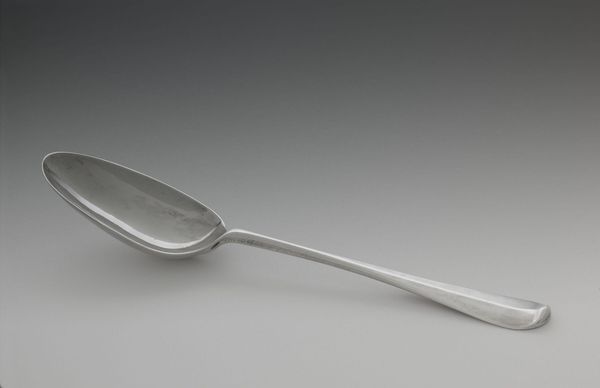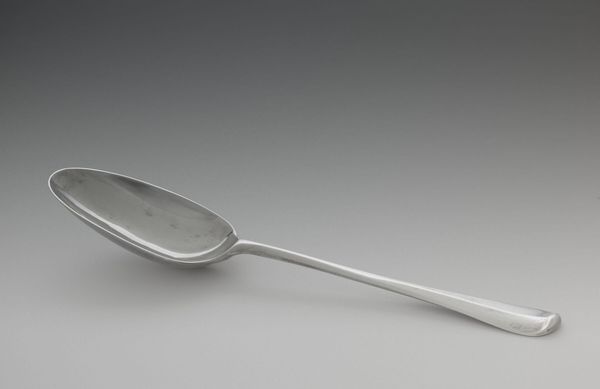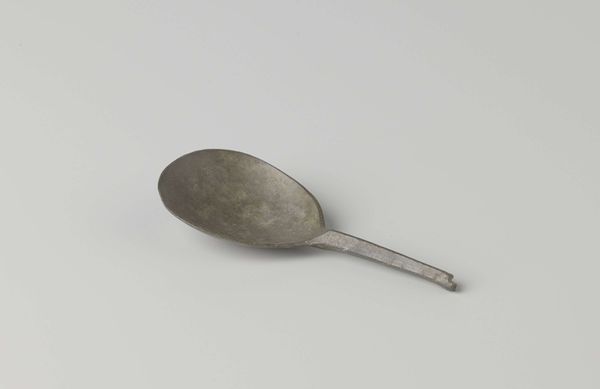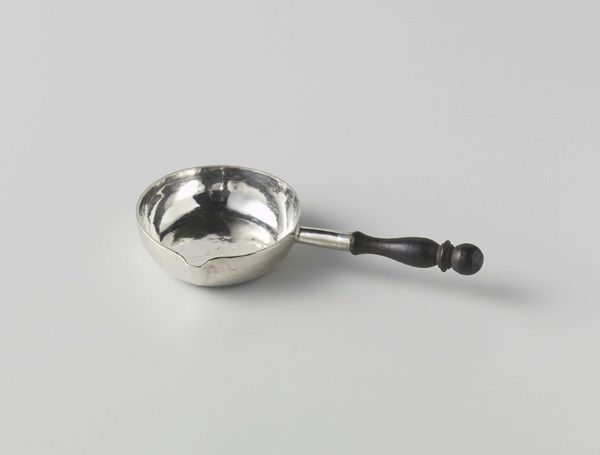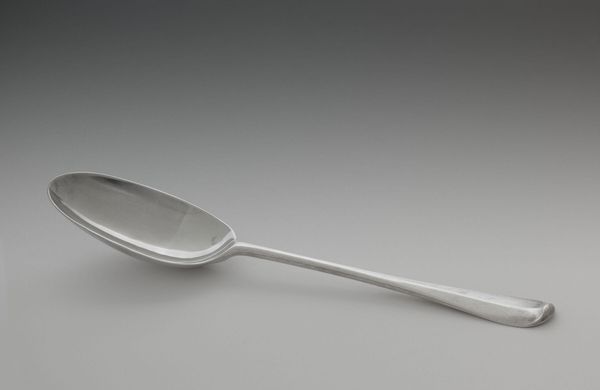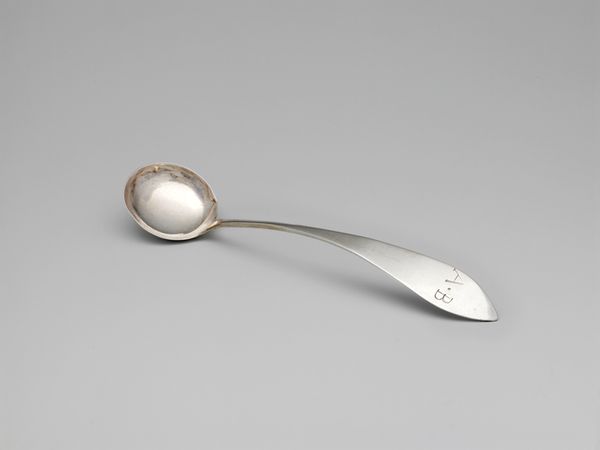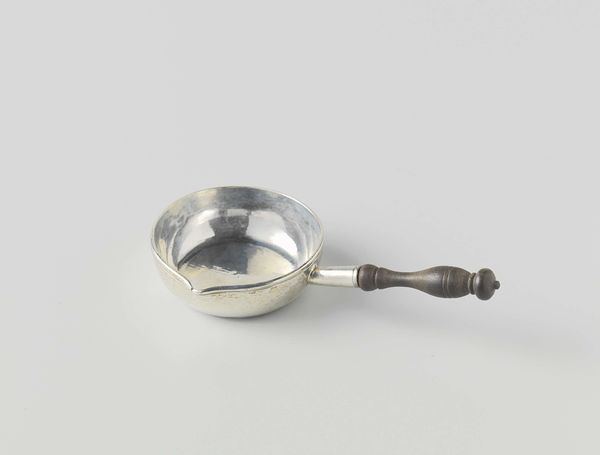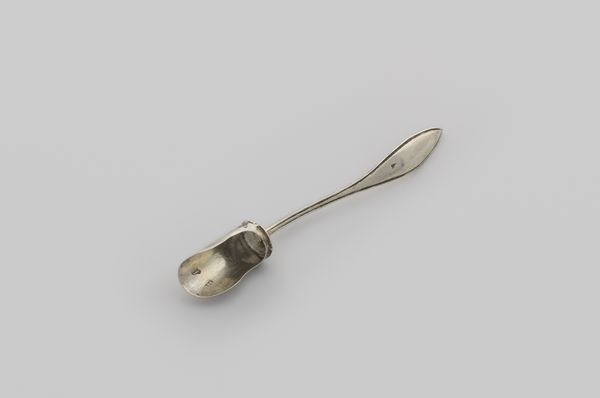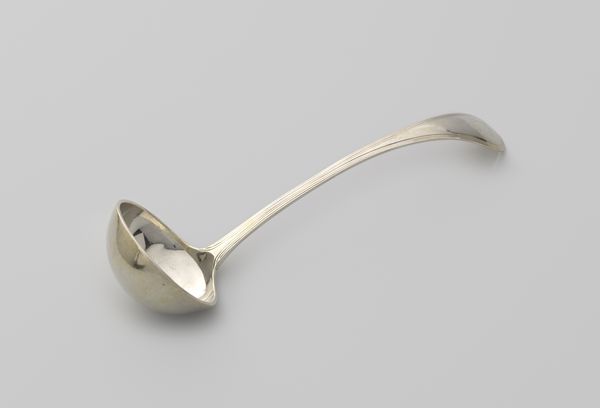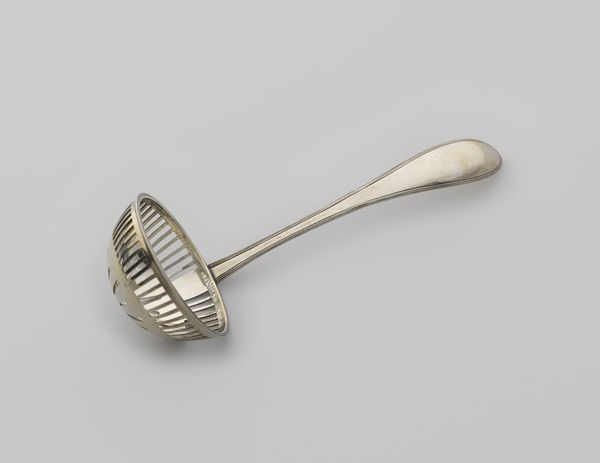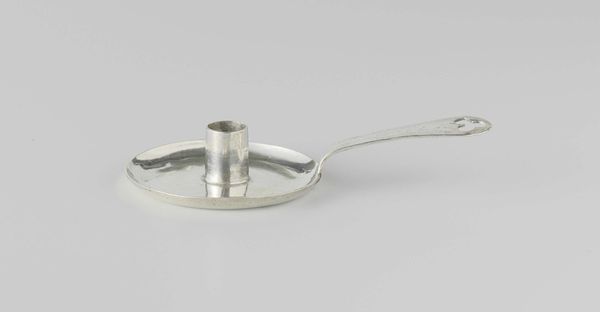
assemblage, metal, found-object, sculpture
#
abstract-expressionism
#
assemblage
#
metal
#
found-object
#
geometric
#
sculpture
#
modernism
Copyright: Alexander Calder,Fair Use
Editor: This intriguing sculpture is titled "Serving Spoon," created by Alexander Calder in 1945, composed of metal and found objects. The starkness of the metal, combined with the simplified form, gives it such an industrial, almost cold, feel. How would you interpret this piece, focusing on its visual elements? Curator: It presents itself as a study in form and materiality, divorced from its utilitarian context. Observe the interplay of geometric shapes – the almost teardrop form of the bowl contrasted with the severe lines of the handle. The dents and imperfections hammered into the metal’s surface disrupt its coldness and offer a contrasting tactile quality. Editor: So, the focus isn’t so much on what it represents, but how it's constructed and the shapes used? Curator: Precisely. Consider the concept of the readymade. While not a true readymade, this work employs a recognizable object, altering its context. The essence lies in Calder's manipulation of form and surface, elevating the mundane to the realm of art through formal and material investigation. How does that impact your reading of its “coldness”? Editor: It almost seems… warmer, knowing he physically shaped it. It wasn't just pulled from a factory line. The hammering adds texture and a sense of touch, like he wanted to humanize the industrial feel. Curator: Exactly! The objectness of the object becomes paramount, creating an intrinsic visual dynamism. Editor: I see that! Thanks to your explanation, I appreciate the contrast of clean lines with its handcrafted textures so much more! Curator: And through that contrast, a new formal language emerges.
Comments
No comments
Be the first to comment and join the conversation on the ultimate creative platform.
